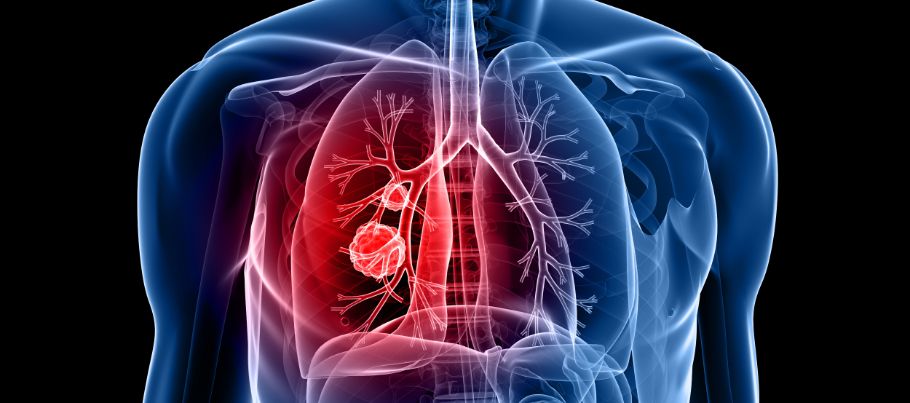News
Article
Rybrevant Plus Chemo Offers Better Progression-Free Survival for NSCLC Subset
Author(s):
The treatment combination of Rybrevant plus chemotherapy offers better progression-free survival for patients with advanced EGFR exon 20 insertion-positive NSCLC.
The treatment combination of Rybrevant plus chemotherapy offers better progression-free survival for patients with advanced EGFR exon 20 insertion-positive NSCLC.

The treatment combination of Rybrevant (amivantamab-vmjw) and chemotherapy provided better progression-free survival (PFS, length of time from the start of treatment until after when the disease does not worsen) for patients with advanced EGFR exon 20 insertion-positive non-small cell lung cancer (NSCLC), compared with chemotherapy alone, according to findings from a phase 3 trial presented at the 2023 ESMO Congress.
Specifically, researchers from the phase 3 PAPILLION trial found that Rybrevant plus chemotherapy had a median PFS of 11.4 months, whereas chemotherapy had a median PFS of 6.7 months for the respective patient population. These findings were also reflected in a study published in the New England Journal of Medicine.
To be eligible for enrollment in the phase 3 trial, patients had to have untreated, locally advanced or metastatic NSCLC with a documented EGFR exon 20 insertion mutation.
Within the phase 3 PAPILLION trial, a total of 308 patients were randomly assigned to two groups, in which 153 patients were placed in the Rybrevant plus chemotherapy group and 155 patients were placed in the chemotherapy-alone group. Patients in the chemotherapy alone arm were allowed to cross over to receive Rybrevant monotherapy if they experienced disease progression.
The median patient age was 61 years in the combination arm and age 62 years in the chemotherapy-alone arm. Most patients in both arms were female (56% versus 60%), Asian (64% versus 59%) and did not have a history of smoking (58% versus 59%).
Consistent benefit was also seen by investigator assessment, with a median PFS of 12.9 months with the combination versus 6.9 months with chemotherapy alone. The 12- and 18-month PFS rates with the combination were 48% and 31%, respectively, versus 13% and 3% with chemotherapy alone.
The results also determined that improved overall survival (OS, length of time from diagnosis or start of treatment when a patient remains alive) with the combination was also seen. The median OS was not evaluable, according to the researchers, in the combination arm versus 24.4 months in the chemotherapy-alone arm. The 18- and 24-month OS rates in the combination arm were 74% and 72%, respectively, versus 68% and 54% with chemotherapy alone.
“Consistent PFS benefit (was seen) across predefined subgroups by blinded independent central review. (Rybrevant)-chemotherapy represents the new standard of care for first-line EGFRexon 20 insertion-mutated advanced NSCLC,” Dr. Nicolas Girard, professor of respiratory medicine at Versailles Saint Quentin University and professor and head of the Curie-Montsouris Thorax Institute at the Institut Curie in France, said in a presentation of the data.
Findings from the trial served as the basis for Janssen’s submission of a supplemental biologics license application to the Food and Drug Administration and a Type 2 extension of indication application to the European Medicines Agency seeking the expanded approval of Rybrevant plus chemotherapy for this patient population.
Platinum-based chemotherapy remains the frontline standard of care for patients with EGFRexon 20 insertion-mutated, advanced NSCLC despite attempts to improve outcomes with common EGFR TKIs (tyrosine kinase inhibitors, blocks the action of enzymes that can help prevent cancer cells from growing) and checkpoint inhibitors.
Rybrevant is an EGFR and MET bispecific antibody currently approved for the treatment of patients with EGFR exon 20 insertion–mutated advanced NSCLC following progression of platinum-based chemotherapy. Because of its immune cell-directing activity, investigators hypothesized that the agent may lead to deeper and more durable responses in combination with chemotherapy.
Previous results from a phase 1 study demonstrated the safety, tolerability and efficacy of the combination in a small population of 20 patients. In the five patients with untreated EGFRexon 20 insertion-mutated NSCLC, four achieved partial response.
PFS served as the primary end point, which is defined as the main result measured at the end of a study to see if treatment worked, according to National Cancer Institute.
Secondary end points included objective response rate (ORR, percentage of patients in the study who have a partial or complete response to treatment), duration of response (DOR, length of time that a disease responds to treatment without progressing), OS and safety.
Additional results demonstrated that the ORR was 73% with the combination, compared with 47% with chemotherapy alone. Best response consisted predominantly of partial responses in both the combination and chemotherapy alone arms, respectively (69% versus 47%), though complete responses (4% versus 1%) and stable disease (19% versus 41%) also occurred.
Few patients experienced progressive disease in the combination and chemotherapy-alone arms (3% versus 11%), and 10 patients were not evaluable, with 5% in the combination arm and 1% in the chemotherapy alone arm.
The median time to response was 6.7 weeks with the combination versus 11.4 weeks with chemotherapy alone.
The median DOR was 9.7 months with the combination versus 4.4 months with chemotherapy alone. At data cutoff, 49% of patients in the combination arm remained in response, compared with 17% in the chemotherapy alone arm.
The 12- and 18-month DOR rates were 43% and 34% with the combination, respectively, versus 8% and 4% with chemotherapy alone.
Of the 153 and 155 patients who were randomly assigned to the combination and chemotherapy alone groups, 151 and 155 patients received their respective treatment regimens. In the combination arm, 54% discontinued treatment due to disease progression (33%), a side effect (9%), patient withdrawal (8%), other reason (3%) or death (1%).
In the chemotherapy-alone arm, the researchers determined that 85% of patients discontinued treatment because of disease progression (69%), a side effect (9%), patient withdrawal (3%), other reason (3%) or death (1%). Of these patients, 65 crossed over to receive Rybrevant as part of the study. Another six patients received the agent off-protocol, leaving 15% of patients in ongoing treatment in the chemotherapy arm and 46% in the combination arm.
Regarding safety, severe or worse side effects occurred in 75% of patients in the combination arm, compared with 54% of patients in the chemotherapy alone arm. Serious side effects and side effects leading to death were comparable between arms, Girard noted.
The most common severe or worse side effects associated with EGFR inhibition were rash (11% versus 0% with the combination and chemotherapy alone, respectively), paronychia (infection at the root and side of fingernails and toenails) (7% versus 0%) and dermatitis acneiform (skin eruptions that resemble acne) (4% versus 0%).
The only two severe or worse side effects associated with MET inhibition were hypoalbuminemia (when the body does not produce enough albumin protein responsible for retaining fluid in blood vessels) (4% versus 0%) and peripheral edema (swelling caused by excess fluid trapped in body’s tissues, typically in the limbs) (1% versus 0%).
Other common severe or worse side effects included neutropenia (lower amounts of white blood cells) (33% versus 23%), anemia (11% versus 12%) and leukopenia (lower amounts of white blood cells) (11% versus 3%).
Other reported toxicities were infusion-related reactions, constipation, nausea, thrombocytopenia (low platelet count), decreased appetite, alanine aminotransferase increase (enzyme mostly found in the liver), aspartate aminotransferase increase (enzyme mostly found in the liver), COVID-19, hypokalemia (low potassium levels) and vomiting.
“The safety profile of Rybrevant-chemotherapy was consistent with the individual agents, and low rates of treatment-related discontinuations (occurred) with Rybrevant at 7%,” Girard concluded.
For more news on cancer updates, research and education, don’t forget to subscribe to CURE®’s newsletters here.




